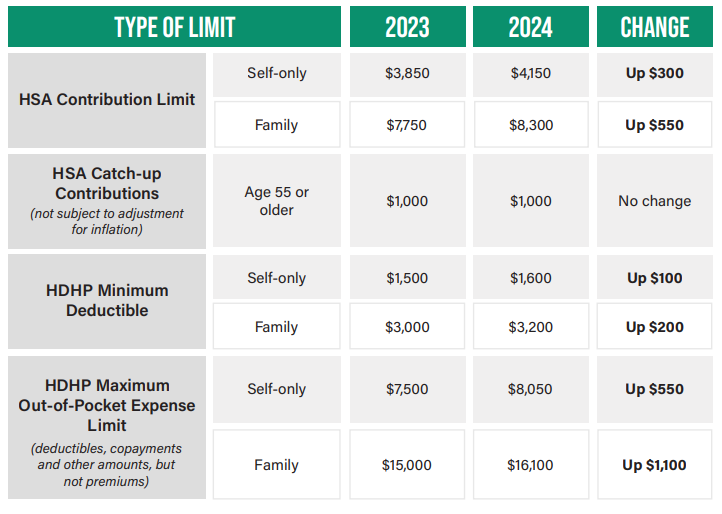Is a Worker an Employee or an Independent Contractor?
The Department has issued regulations addressing how to analyze whether a worker is an employee or an independent contractor under the FLSA (29 CFR part 795, effective March 11, 2024). Employees receive the protections of the FLSA. Independent contractors are in business for themselves and therefore are not covered by the FLSA.
For a worker to be protected by the minimum wage and overtime pay requirements of the FLSA, the worker must be an “employee” of the employer, meaning that there is an employment relationship between the worker and employer. Independent contractors do not have these protections. Whether a worker is an employee or an independent contractor under the FLSA is determined by looking at the economic realities of the worker’s relationship with the employer. If the economic realities show that the worker is economically dependent on the employer for work, then the worker is an employee. If the economic realities show that the worker is in business for themself, then the worker is an independent contractor. The economic realities of the entire working relationship are looked at to decide whether a worker is an employee or an independent contractor. Employment under the FLSA is not determined by technical concepts or common law standards of control; it is broader than the common law standard often applied to determine employment status under other Federal laws.
What Is the Economic Reality Test?
The economic reality test uses multiple factors to see if an employment relationship exists under the FLSA (29 CFR 795.110). The goal of the test is to decide if the worker is economically dependent on the employer for work or is instead in business for themself. All factors should be considered. No single factor determines a worker’s status, and no one factor or combination of factors are more important than the other factors. Instead, the totality of the circumstances of the working relationship should be considered.
The following factors, discussed more below, should guide the assessment of whether a worker is an employee under the FLSA or an independent contractor in business for themself:
Opportunity for profit or loss depending on managerial skill,
Investments by the worker and the employer,
Permanence of the work relationship,
Nature and degree of control,
Whether the work performed is integral to the employer’s business, and
Skill and initiative.
Additional factors may be considered as well if they are relevant to whether the worker is in business for themself or is economically dependent on the employer for work. There are certain facts, however, that are not relevant to whether an employment relationship exists. What the worker is called is not relevant—a worker may be an employee under the FLSA regardless of the title or label they are given. A worker who is paid off the books or receives a 1099 is not necessarily an independent contractor and agreeing verbally or in writing to be classified as an independent contractor—including by signing an independent contractor agreement—does not make a worker an independent contractor under the FLSA. Additionally, such facts as the place where work is performed, whether a worker is licensed by State/local government, and the time or mode of pay do not determine whether a worker is an employee or an independent contractor under the FLSA.
Economic Reality Test Factors
Opportunity for profit or loss depending on managerial skill. This factor primarily looks at whether a worker can earn profits or suffer losses through their own independent effort and decision making. Relevant facts include whether the worker negotiates their pay, decides to accept or decline work, hires their own workers, purchases material and equipment, or engages in other efforts to expand a business or secure more work, such as marketing or advertising. Taking such actions or having a real opportunity to take such actions but making a business decision not to (for example, because the potential profit to be gained may not justify the expense that would be incurred), indicates that the worker is an independent contractor. Not taking such actions or having only a theoretical opportunity to take such actions (for example, the worker must get approval from the employer), indicates that the worker is an employee. A worker who decides to work more hours or take on more jobs when paid a fixed rate per hour, day, or job is generally not exercising managerial skill like an independent contractor even if those decisions may lead to more earnings.
Examples: Opportunity for Profit or Loss Depending on Managerial Skill
A worker for a landscaping company performs assignments only as decided by the company for its corporate clients. The worker does not independently choose assignments, ask for additional work from other clients, advertise the landscaping services, or try to reduce costs. The worker regularly agrees to work additional hours to earn more money. In this example, the worker does not exercise managerial skill that affects their profit or loss. Rather, their earnings may change based on the work available and their willingness to work more. Because of this lack of managerial skill affecting their opportunity for profit or loss, these facts indicate employee status under the opportunity for profit or loss factor.
In contrast, a worker provides landscaping services directly to corporate clients. The worker produces their own advertising, negotiates contracts, decides which jobs to perform and when to perform them, and decides when and whether to hire helpers to assist with the work. This worker exercises managerial skill that affects their opportunity for profit or loss. These facts indicate independent contractor status under the opportunity for profit or loss factor.
Investments by the worker and the employer. This factor primarily looks at whether the worker makes investments that are capital or entrepreneurial in nature. Investments by a worker that support the growth of a business, including by increasing the number of clients, reducing costs, extending market reach, or increasing sales, weigh in favor of independent contractor status. A lack of such capital or entrepreneurial investments weighs in favor of employee status. Costs to a worker of tools for a specific job and costs that the employer imposes on the worker are not capital or entrepreneurial investments that indicate independent contractor status. In addition to considering the nature of any investments by the worker, the worker’s investments should be compared to the employer’s investments in its overall business. The worker’s investments do not need to be equal to the employer’s and should not be compared only in dollar amounts or size. The focus should be on whether the worker makes similar types of investments as the employer (even if on a smaller scale) or investments of the type that would allow the worker to operate independently in the worker’s industry or field. Such investments by the worker in comparison to the employer weigh in favor of independent contractor status, while a lack of investments that support an independent business indicate employee status.
Examples: Investments by the Worker and the Employer
A graphic designer provides design services for a commercial design firm. The firm provides software, a computer, office space, and all the equipment and supplies for the worker. The company invests in marketing and finding clients and maintains a central office from which to manage services. The worker occasionally uses their own preferred drafting tools for certain jobs. In this scenario, the worker's relatively minor investment in supplies is not capital in nature and does little to further a business beyond completing specific jobs. These facts indicate employee status under the investment factor.
A graphic designer occasionally completes specialty design projects for the same commercial design firm. The graphic designer purchases their own design software, computer, drafting tools, and rents their own space. The graphic designer also spends money to market their services. These types of investments support an independent business and are capital in nature (e.g., they allow the worker to do more work and find new clients). These facts indicate independent contractor status under the investment factor.
Degree of permanence of the work relationship. This factor primarily looks at the nature and length of the work relationship. Work that is sporadic or project-based with a fixed ending date (or regularly occurring fixed periods of work), where the worker may make a business decision to take on multiple different jobs indicates independent contractor status. Work that is continuous, does not have a fixed ending date, or may be the worker’s only work relationship indicates employee status. The lack of a long working relationship does not necessarily suggest that the worker is an independent contractor unless it is because of the worker’s business decision. Short-term jobs for multiple employers may be due to the seasonal or temporary nature of the work or industry, and not the worker’s business decision to market their services to multiple entities, and therefore may indicate employee status.
Examples: Degree of Permanence of the Work Relationship
A cook has prepared meals for an entertainment venue continuously for several years. The cook prepares meals as decided by the venue, depending on the size and specifics of the event. The cook only prepares food for the entertainment venue, which has regularly scheduled events each week. The relationship between the cook and the venue is characterized by a high degree of permanence and exclusivity as the cook does not cook for other venues. These facts indicate employee status under the permanence factor.
A cook has prepared specialty meals occasionally for an entertainment venue over the past three years for certain events. The cook markets their meal preparation services to multiple venues and private individuals and turns down work from the entertainment venue for any reason, including because the cook is too busy with other meal preparation jobs. The cook has a sporadic or project-based nonexclusive relationship with the entertainment venue. These facts indicate independent contractor status under the permanence factor.
Nature and degree of control. This factor primarily looks at the level of control the potential employer has over the performance of the work and the economic aspects of the working relationship. Relevant facts include whether the potential employer: controls hiring, firing, scheduling, prices, or pay rates; supervises the performance of the work (including via technological means); has the right to supervise or discipline workers; and takes actions that limit the worker’s ability to work for others. Where the potential employer maintains more control over these aspects of the work relationship, this factor weighs in favor of employee status, and where the potential employer maintains less control over these aspects of the work relationship, this factor weighs in favor of independent contractor status. Control that is for the sole purpose of complying with a specific, applicable federal, state, tribal, or local regulation, rather than the employer’s own internal policies or customer standards, does not weigh in favor of an employment relationship.
Examples: Nature and Degree of Control
A registered nurse provides nursing care for Alpha House, a nursing home. The nursing home sets the work schedule with input from staff regarding their preferences and determines the staff assignments. Alpha House's policies prohibit nurses from working for other nursing homes while employed with Alpha House to protect its residents. In addition, the nursing staff are supervised by regular check-ins with managers, but nurses generally perform their work without direct supervision. While nurses at Alpha House work without close supervision and can express preferences for their schedule, Alpha House maintains control over when and where a nurse can work and whether a nurse can work for another nursing home. These facts indicate employee status under the control factor.
Another registered nurse provides specialty movement therapy to residents at Beta House. The nurse maintains a website and was contacted by Beta House to assist its residents. The nurse provides the movement therapy for residents on a schedule agreed upon between the nurse and the resident, without direction or supervision from Beta House, and sets the price for services on the website. In addition, the nurse provides therapy sessions to residents at Beta House as well as other nursing homes in the community at the same time. These facts—that the nurse markets their specialized services to obtain work for multiple clients, is not supervised by Beta House, sets their own prices, and has the flexibility to select a work schedule—indicate independent contractor status under the control factor.
Extent to which the work performed is an integral part of the employer’s business. This factor primarily looks at whether the work is critical, necessary, or central to the potential employer’s principal business, which indicates employee status. Where the work performed by the worker is not critical, necessary, or central to the potential employer’s principal business, this indicates independent contractor status. This factor does not depend on whether any individual worker in particular is an integral part of the business, but rather whether the work they perform is an integral part of the business.
Examples: Extent to Which the Work Performed is an Integral Part of the Employer’s Business
A large farm grows tomatoes that it sells to distributors. The farm pays workers to pick the tomatoes during the harvest season. Because a necessary part of a tomato farm is picking the tomatoes, the tomato pickers are integral to the company's business. These facts indicate employee status under the integral factor.
Alternatively, the same farm pays an accountant to provide non-payroll accounting support, including filing its annual tax return. This accounting support is not critical, necessary, or central to the principal business of the farm (farming tomatoes), thus the accountant’s work is not integral to the business. Therefore, these facts indicate independent contractor status under the integral factor.
Skill and initiative. This factor primarily looks at whether the worker uses their own specialized skills together with business planning and effort to perform the work and support or grow a business. The fact that a worker does not use specialized skills (for example, the worker relies on the employer to provide training for the job) indicates that the worker is an employee. Additionally, both employees and independent contractors can be skilled, so the fact that a worker is skilled does not indicate one status or the other. The focus should be on whether the worker uses their skills in connection with business initiative. If the worker does, that indicates independent contractor status; if the worker does not, that indicates employee status.
Examples: Skill and Initiative
A highly skilled welder provides welding services for a construction firm. The welder does not make any independent decisions at the job site beyond what it takes to do the work assigned. The welder does not determine the sequence of work, order additional materials, think about bidding for the next job, or use their welding skills to obtain additional jobs, and is told what work to perform and where to do it. In this scenario, the welder, although highly skilled technically, is not using those skills in a manner that evidences business-like initiative. These facts indicate employee status under the skill and initiative factor.
A highly skilled welder provides a specialty welding service, such as custom aluminum welding, for a variety of area construction companies. The welder uses these skills for marketing purposes, to generate new business, and to obtain work from multiple companies. The welder is not only technically skilled, but also uses and markets those skills in a manner that evidences business-like initiative. These facts indicate independent contractor status under the skill and initiative factor.
Additional factors may be considered if they assist in assessing whether the worker is in business for themself or is economically dependent on the employer for work.
Requirements
When an employer-employee relationship exists and the employee is performing work that is covered under the FLSA, the employee must be paid not less than the federal minimum wage ($7.25 per hour) and overtime pay that is not less than one and one-half the regular rate of pay for all hours worked over 40 per week unless a relevant exemption applies. The FLSA also has recordkeeping requirements, retaliation protections, and child labor provisions which regulate the employment of minors under the age of eighteen.
Where to Obtain Additional Information
For additional information, visit our Wage and Hour Division Website: http://www.dol.gov/agencies/whd and/or call our toll-free information and helpline, available 8 a.m. to 5 p.m. in your time zone, 1-866-4USWAGE (1-866-487-9243).
This publication is for general information and is not to be considered in the same light as official statements of position contained in the regulations.
Source: U.S. Department of Labor, Wage and Hours Division


